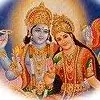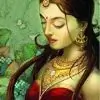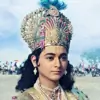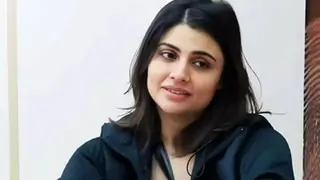Brihal Parashar Smriti defines thus "A Brahman is a book which tells the meaning of Vedic Mantras and its use". Similarly in Vaishaishik Darshan, Maharshi Kannaaad says "Brahmanas defines words of the Vedas and its meanings. In ancient times there where many Brahmanas, but currently only six are to be found:-
- Aitareya Brahman Granth based on Rig Veda authored by Rishi Aitareya Mahidaas.
- Shankhyayan Brahman Granth based on Rig Veda
- Kaushtiki Brahman based on Rig Veda
- Shatapath Brahman Granth based on Yajurveda
- Maha-Tandya Brahman Granth based on Sam Veda
- Gopath Brahman Granth based on Atharva Veda
So its Important to understand that when we talk of Vedas --THEY ARE ONLY 4 but A VEDIC GRANTHA as a whole is incomplete without it's subparts--Like Upaveda,Vedanga,Shakha ,brahmna,Sutra grantha,Neeti,Aranyak,Uanishads Purans,Darshan shastra,Smriti Itihas etc
- Ayurveda (Sciences relating to LIFE and MEDICINE):- Ayurveda is related to the secret of life and the science of long life. The originator of Ayurveda is supposed to be Lord Dhanwantari. Apart from him, other prominent names are Aitareya, Kashyapa, Harit, Agnivesha, and Bhedamuni. At present, three important books of Ayurveda are: Charak Samhita, Sushruta Samhita and Vaagbhatta Samhita. These three books are collectively called Brihat-trayi. Patanjali has also authored text on Ayurveda.
- Dhanurveda: This Upveda explains Spiritual sciences like PURUSHARTHA, DUTIES, DEEDS, etc and also Material sciences like CIVIL and MILITARY defense, war and politics. The Ramayana and Mahabharata a good deal of light is thrown upon this science and art, particularly in the descriptions of battles. The most ancient books of Dhanurveda are not available, but some of the known books are Dhanurvidhi, Drauna Vidya, Kodanda Mandana and Dhanurveda Samhita.
- Gandharva Veda: Gandharvaveda is the science of music, derived from the Sama-Veda, and we have already dealt with this subject briefly, while dealing with the Vedaanga of Chhandas. Apart from Devotional Music it also deals with some subjects of Spiritual Sciences.
- Shilpa Veda (Sthapatya Ved): It deals with architecture and various arts. According to Shukra-niti there are a number of arts but 64 are considered to be more prominent.
- Artha Veda: Artha-Veda is the Upaveda of the Atharva-Veda, which deals with social, economic, and political systems. In the early medieveal times Artha Shashtra was also authored by Chanakya
Vedang
Vedang are the auxillary to the four Vedas essential for the correct interpretation of the Vedas. Mundaka Upanisad mentions that there are six Vedanga which are as follows: (i) Siksha (Education), (ii) Kalpa (Creation), (iii) Vyakarana (Grammer), (iv) Nirukta (Etymology), (v) Chhanda (Metres), and (vi) Jyotisha (Mathematics & Astronomy).
|
Shaakha
The Shaakhas of the Vedas are explantions and / or editions of the original Samhitas (Vedas); and thus not the original Vedas. They may be even mixed up with the Brahmanas. So they are the creation of leter Vedic Seers. In the past there where 1127 Shakhas of the Vedas including 20 of the RigVeda, 100 of the Yajurveda, 1000 of the SamVeda and 7 of the AtharvaVeda. But at present only a few (8-10) Shakhas are available. |
Aranyak
Aranyak Granth contains the extracts from Brahman Granths. |
Sutra Granth
The following are the nine Vedic Sutra Granth that can be found:-
|
Smriti
Smriti(s) are the books of social, economic and political laws which are changeable with time and have been composed by scholars from time to time as the need was. Amongts 250 Smrities (known to have been mentioned in different texts) only some 57 are traceable now, the most prominent ones being Manu Smriti. After the last plavan, the learned King Vaivaswat Manu took the pledge of re establishing the displaced human society. He authored Manu Smriti in which he laid the basic natural, civil and criminal laws required to run a society. There are 12 chapters in ManuSmriti. YajyaValka Smriti is another valuable one. It consists of 3 Chapters: Aachaar, Vyavahaar, & Praayashchita. Some twenty other Smritis are:-
|
Darshan Shashtra
There are six Darshan Shashtras - also known as Upaang or Shat Darshan (The Six Visualisation); they are:-
|
Upanishad
The Upanishads mostly explain in details Vedic Theology including metaphysics, spiritual and mystical powers and concepts of the God. The literal meaning of Upanishad itself is "the knowledge of realising and visualising God". In some Upanishads, some of the Vedic hymns are produced as such. These texts mostly deal with the concepts, charateristics and manifestations of powers of the God, nature and properties of the soul, its relationship with the God; sometimes in figurative manner or in symbolic stories. in these books, most complex philosophical concepts and spiritual experiences have been presented through lucid dialogues. Upanishad is also called Shruti. References in mythological literature indicates the existence of 1000 Upanishads in ancient times. It is said that in ancient times each Shaakha of a Veda had its own Upanishad. But like Shakaas, upanishads are also untraceable now. The major 11 ones are as noted below (with the Veda they belong to):-
|
Puraana
The Puraanas are the books of ancient Indian History, culture and civilisation along with mythology of Hindu Religion and its several sects. Along with some description of creation of Universe, moral education, and history of Kings, they emphasise on incarnation of God in different gods and goddesses as Brahma, Vishnu, Shiva and their incarnations. Each Purana is devoted to the main deity of a particular sect, i.e Vaishnav, Shaiva or Shakti showing supremacy of one over other - reflecting the sectarian approach. On account of gradual additions, alterartions, and distortions for hundred of years continuosly in the Puranas, particularly under the influence of upheaval of Buddhism and Jainism and then under the Islamic and Chritian rulers in India, aome irrational, illogical, unethical, unsceintific, inhumanatarian and ANTIVEDIC concepts have crept in the Puranas. Such concepts are multiplicity of Gods and their incarnations; their feuds for supremacy, idol worship, social discrimination, casteism, and several other superstitions are totaly UnVEDIC. Therefore their illogical teachings, unbelievable narations, and unscentific concepts contrary to the Vedas are quite discardable. However, there historic accounts are of great use as ancient culture. Strictly speaking Puraanas need a drastic "purification" through cross examination before they can be acceptable for common public consumption. Even the Pauranics (the believers of the Puraanas) are not unanimous about the number and source of the Puranas. Given below is one of the counts available:-
In addition, there are eighteen (18) Upa-Puranas, and eighteen (18) Aup-Puranas which are also called Ati-Puranas as follows:
|
Itihaas
Out of the various historical stories authored in sanskrit, two of them find a special place in Vedic Literature as contain valuable study, reading and following of the Veda. These are also called the great epics of Hinduism, they are:-
|
Neeti
At various times, sages have authored literature on their primary set of beliefs and ethics. These are called Neeti. There are various Neeti, of which authored the following are worth mentioning:-
|




























